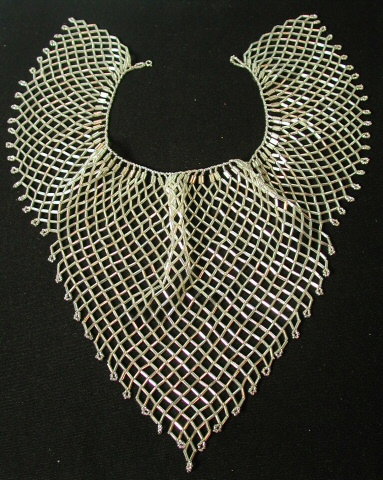Wendy Louise Williams

(n.d.) lives in Ripley
Collar, n.d.
nylon, metal, silver glass seed and silver pipe beads, 18 x 14 x 1 inches, 2004.50.50
This beaded collar is not of a traditional Choctaw design though it has over the years become part of their culture. This collar design is associated with contemporary Choctaw apparel and is most often worn by a Choctaw Princess. The Princess serves for one year as an ambassador for the Tribe traveling around the country with the Tribal Chief to promote Tribal awareness. Williams’ work was on view in the 2004 Choctaw Crafts: Making Tennessee Home exhibit at the Tennessee Arts Commission Gallery.

The Ripley Choctaw migrated from a reservation in Philadelphia, Mississippi to the Golddust region in the 1950’s. Golddust is positioned on the edge of the Mississippi River, just a few miles west of Ripley, TN. The Choctaw were sharecroppers so this was a purely economic migratory move. In 1976, after the decline in the labor force due to agricultural mechanization, they began to move into Ripley or back to the reservation in Philadelphia. Today, only a few Choctaw remain in the Golddust region. The Ripley Choctaw have been recognized by the U. S. Government’s Bureau of Indian Affairs as an independent band of Indians, but they still maintain membership in the Mississippi Band of Choctaw Indians in Philadelphia. Currently, there are around 300 Choctaw individuals living in the West Tennessee area that includes Gates, Halls, Henning, Memphis, and Ripley.

